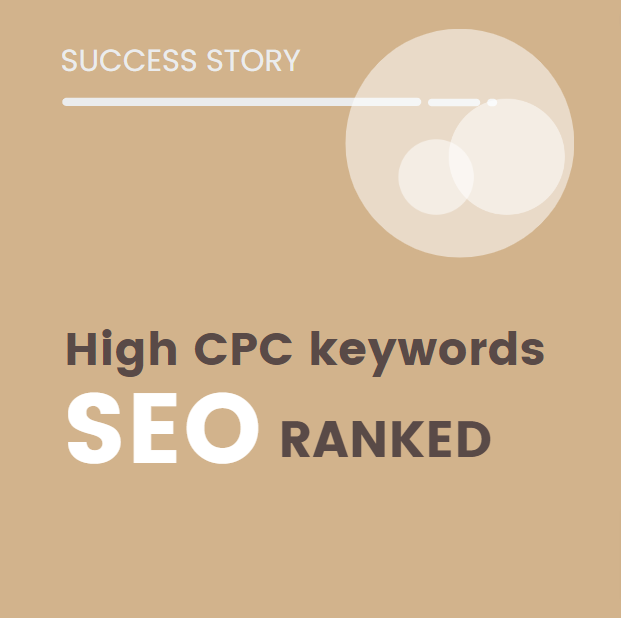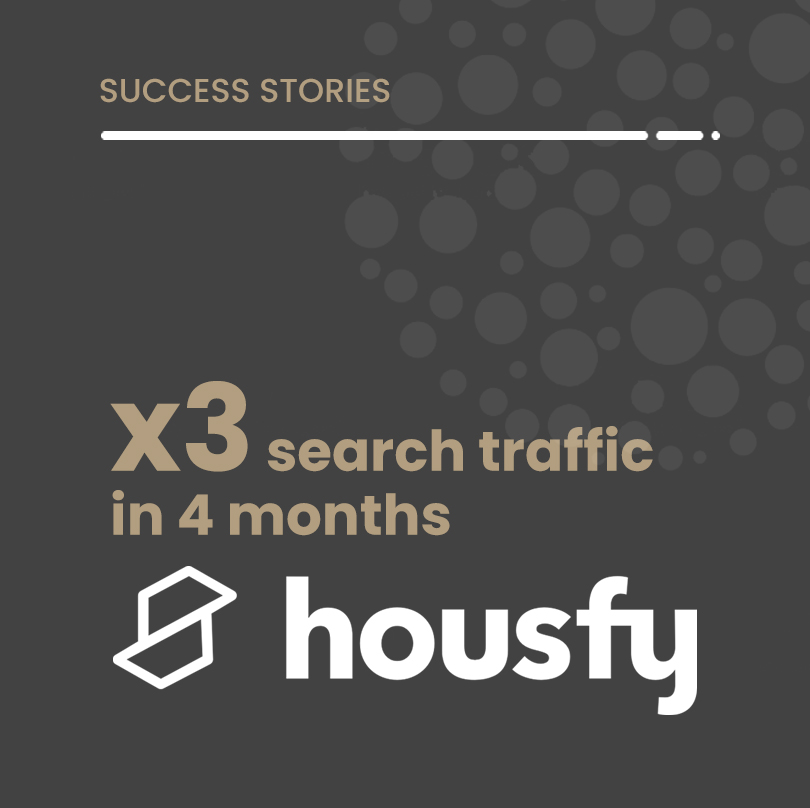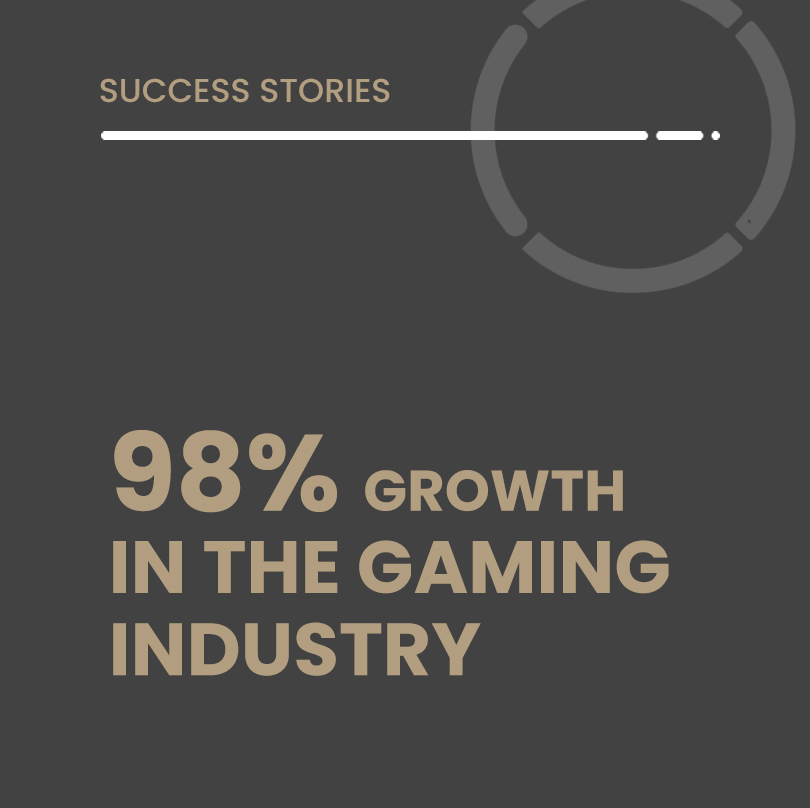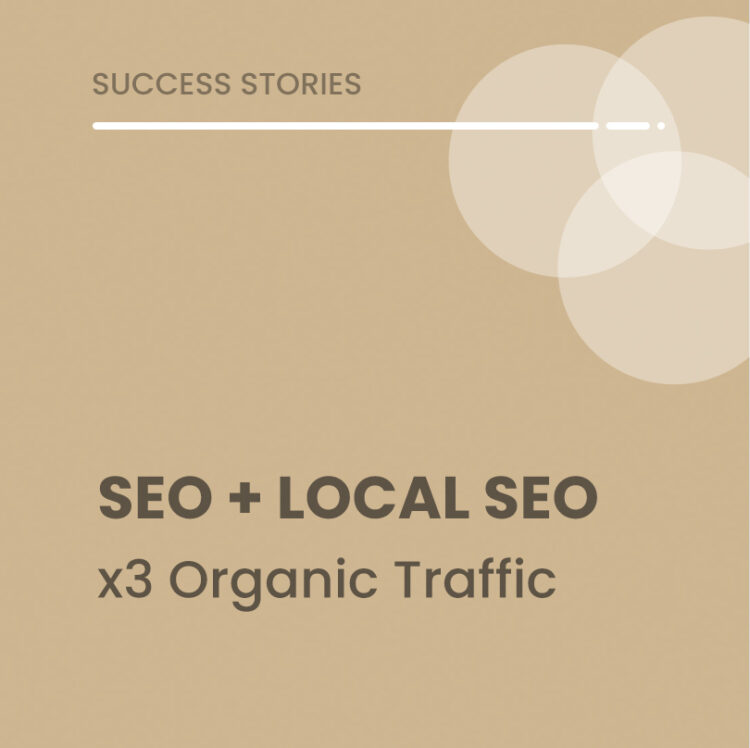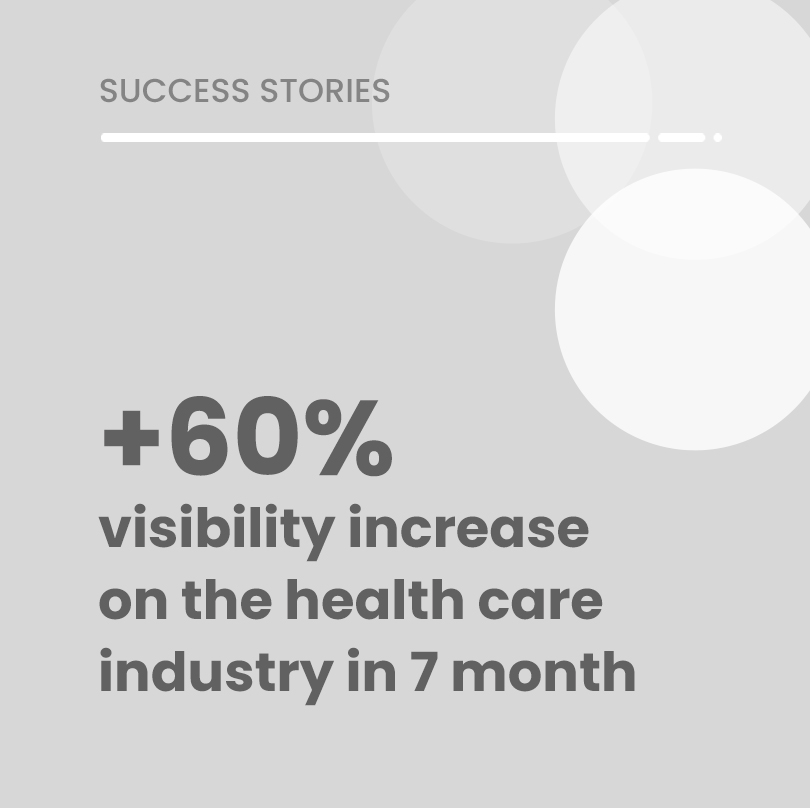Today we want to inaugurate a new section in the blog where we will expose some of our success cases, as well as tell how we get to them.
The first success story we bring you today is OUR FIRST MILLION, or what is the same, the first website with which we managed to reach 1,000,000 visits in one day.
Before explaining the case, below you can see the day of the milestone:
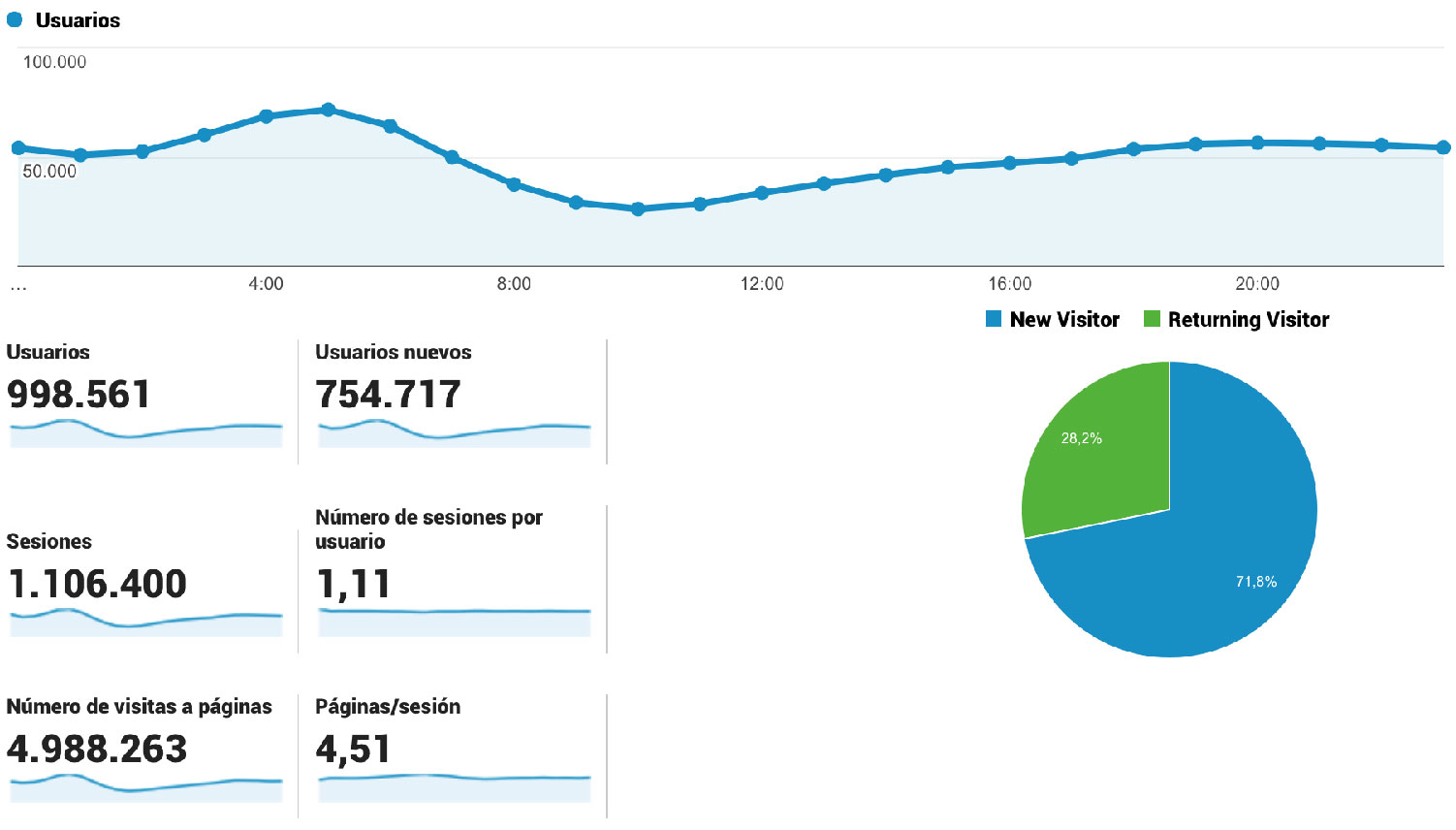
 Our first moment of happiness came after working half a year on the project and allowed us to surpass the 400,000 daily visits.
Our first moment of happiness came after working half a year on the project and allowed us to surpass the 400,000 daily visits.
 If you think that living on your own project and working on the internet is easy, you don’t know what it’s all about.
They were the navities of 2015 and we thought we were the kings of Google. The traffic was going very well and the project seemed to go higher after a long time of stability, but suddenly the kings brought us the first host. We lost 30% of the traffic in a few days and from there the traffic started to fall slowly and agonizingly.
If you think that living on your own project and working on the internet is easy, you don’t know what it’s all about.
They were the navities of 2015 and we thought we were the kings of Google. The traffic was going very well and the project seemed to go higher after a long time of stability, but suddenly the kings brought us the first host. We lost 30% of the traffic in a few days and from there the traffic started to fall slowly and agonizingly.
 The project grew gradually and steadily over the next 7 months.
This first hit came with its corresponding scare and psychological stick. We decided to lower the volume of advertising, stop using invasive banners on our site and took the opportunity to add new improvements that will help the growth of the site. It is important to note that since we started in the sector until this time in 2017 the niche became much more competitive, became more professional and also Google reduced the organic reach and thus the ability to attract traffic.
The project grew gradually and steadily over the next 7 months.
This first hit came with its corresponding scare and psychological stick. We decided to lower the volume of advertising, stop using invasive banners on our site and took the opportunity to add new improvements that will help the growth of the site. It is important to note that since we started in the sector until this time in 2017 the niche became much more competitive, became more professional and also Google reduced the organic reach and thus the ability to attract traffic.
 After a few months of steady growth, it seemed that the knock-on effect of the domain redirection and all the actions we had implemented were fading away. The next 6 months we suffered what we call “death by pinching“, a slow but steady traffic drop where your project cries out for help. This is usually due in most cases to a content problem and this case was no different.
After a few months of steady growth, it seemed that the knock-on effect of the domain redirection and all the actions we had implemented were fading away. The next 6 months we suffered what we call “death by pinching“, a slow but steady traffic drop where your project cries out for help. This is usually due in most cases to a content problem and this case was no different.
 This was a revealing fact and made us realize the problem and, above all, be able to understand the source in order to reverse it.
So we pulled several excels, crossing Safecont data with Google Analytics and after two weeks of hard work the following happened:
This was a revealing fact and made us realize the problem and, above all, be able to understand the source in order to reverse it.
So we pulled several excels, crossing Safecont data with Google Analytics and after two weeks of hard work the following happened:
 In just 4 days we went from 110,000 daily visits to 225,000 and from then on we changed the trend of the project again.
In just 4 days we went from 110,000 daily visits to 225,000 and from then on we changed the trend of the project again.
 After this recovery, the project has been maintained at around 200,000 daily visits until Google’s last update this past March. Here the organic madness was unleashed and we multiplied in just 3 days, from just under 200,000 sessions to over 1 million.
After this recovery, the project has been maintained at around 200,000 daily visits until Google’s last update this past March. Here the organic madness was unleashed and we multiplied in just 3 days, from just under 200,000 sessions to over 1 million.

The 1 MILLION visits story
The beginning of the project goes back to 2014 and in itslife it has gone through good, bad and terrible times. The world of online marketing and especially SEO is a world of highs and lows where you need to survive the biggest heads and especially those who learn from their mistakes.The first spike
 Our first moment of happiness came after working half a year on the project and allowed us to surpass the 400,000 daily visits.
Our first moment of happiness came after working half a year on the project and allowed us to surpass the 400,000 daily visits.
What factors influenced this increase?
The work we did on the project was basically based on two main actions: 1º Good terminology analysis where each and every one of the publications attacked keywords with a high volume of visits and very low competition. 2º LinkBuilding work based on high authority domains with contextualized content and PBN links to attack keywords of a higher level of complexity. Thanks to these two actions we were able to reach quite high traffic volume in a relatively short period of time.The first blow
 If you think that living on your own project and working on the internet is easy, you don’t know what it’s all about.
They were the navities of 2015 and we thought we were the kings of Google. The traffic was going very well and the project seemed to go higher after a long time of stability, but suddenly the kings brought us the first host. We lost 30% of the traffic in a few days and from there the traffic started to fall slowly and agonizingly.
If you think that living on your own project and working on the internet is easy, you don’t know what it’s all about.
They were the navities of 2015 and we thought we were the kings of Google. The traffic was going very well and the project seemed to go higher after a long time of stability, but suddenly the kings brought us the first host. We lost 30% of the traffic in a few days and from there the traffic started to fall slowly and agonizingly.
What was the reason for the penalty?
So our first penalty came thanks to advertising . They were times of madness in the CPAs and CPMs, we young and innocent and the intersitials, pop-ups, pop-unders, floating… a very juicy toy. The thing is that we took a penalty from which no matter how much we tried to reverse the situation, we couldn’t.How do we reverse this situation? The first recovery
After a penalty, no matter how many times you reverse the error that led you to it (especially in this time 2016, when Google updates were given after months), you fail to recover the project. Therefore, we decided to do a DOMAIN REDIRECTION and clean the project in Google’s eyes “starting from scratch”. John Mueller has taken almost 2 years to prove us right (see here). The domain redirections we had used to skip different types of algorithmic penalties and we had them very tested. So after the redirection what we expected happened: The project grew gradually and steadily over the next 7 months.
This first hit came with its corresponding scare and psychological stick. We decided to lower the volume of advertising, stop using invasive banners on our site and took the opportunity to add new improvements that will help the growth of the site. It is important to note that since we started in the sector until this time in 2017 the niche became much more competitive, became more professional and also Google reduced the organic reach and thus the ability to attract traffic.
The project grew gradually and steadily over the next 7 months.
This first hit came with its corresponding scare and psychological stick. We decided to lower the volume of advertising, stop using invasive banners on our site and took the opportunity to add new improvements that will help the growth of the site. It is important to note that since we started in the sector until this time in 2017 the niche became much more competitive, became more professional and also Google reduced the organic reach and thus the ability to attract traffic.
What actions do we implement to continue with the constant growth?
Linkbuilding is a basic piece in all our projects and we continue working in a little aggressive but constant way. Many authority links with the highest possible contextualization and little abuse of keywords. In addition to this, we decided to implement several improvements at the OnPage level: 1) We performed an internal linking strategy based on authority, contextualization and UX. Due to our experience, in high traffic projects, this is a relevant factor in order to push or maintain certain keys in the first results. When you have server crashes, the web traffic diminishes and with it the rankings, in the same way with performance problems in specific sections. That’s why we decided to plan a strategy where the weighting of traffic was an important factor for internal linking. With this we created our own formula that took into account on the one hand the linkjuice that received the page at the level of architecture, on the other hand we grouped into content clusters the most related topics and finally we took into account the sections that had more traffic and sought to balance this towards the sections that we wanted to position better. 2) We improved web architecture Many of our pages generated multiple links to sections or resources that ultimately did not have as much value at the organic level, so we put all our main pages at the first level and generated a more organized and balanced structure. 3) We improved the quality of our contents At this point we decided to invest more capital in quality and quantity of content, improving both the volume of text per publication and the pace.The second blow: Death by pinching
 After a few months of steady growth, it seemed that the knock-on effect of the domain redirection and all the actions we had implemented were fading away. The next 6 months we suffered what we call “death by pinching“, a slow but steady traffic drop where your project cries out for help. This is usually due in most cases to a content problem and this case was no different.
After a few months of steady growth, it seemed that the knock-on effect of the domain redirection and all the actions we had implemented were fading away. The next 6 months we suffered what we call “death by pinching“, a slow but steady traffic drop where your project cries out for help. This is usually due in most cases to a content problem and this case was no different.
The second recovery: The Safecont Effect
Safecont had a great part in this second recovery. Before finding this excellent tool, the analysis of contents in large projects was extremely complicated. We knew we had a content problem on the web but we were not aware of the volume of the problem we were dealing with. This was a revealing fact and made us realize the problem and, above all, be able to understand the source in order to reverse it.
So we pulled several excels, crossing Safecont data with Google Analytics and after two weeks of hard work the following happened:
This was a revealing fact and made us realize the problem and, above all, be able to understand the source in order to reverse it.
So we pulled several excels, crossing Safecont data with Google Analytics and after two weeks of hard work the following happened:
 In just 4 days we went from 110,000 daily visits to 225,000 and from then on we changed the trend of the project again.
In just 4 days we went from 110,000 daily visits to 225,000 and from then on we changed the trend of the project again.
The boom
 After this recovery, the project has been maintained at around 200,000 daily visits until Google’s last update this past March. Here the organic madness was unleashed and we multiplied in just 3 days, from just under 200,000 sessions to over 1 million.
After this recovery, the project has been maintained at around 200,000 daily visits until Google’s last update this past March. Here the organic madness was unleashed and we multiplied in just 3 days, from just under 200,000 sessions to over 1 million.
Summary
What factors could have influenced the change?
It is still too early to know the real impact of this latest change in Google, and what are the pieces that are lashing the SERPs worldwide. But what we can denote is what we believe is helping us to achieve this milestone: 1) Very good performance at WPO level that generates a good mobile UX and improves tracking: Good loading times, lighter pages, good optimization of static resources. 2) Good control of similar content and thin content: Elimination of unnecessary pages, desindexación of sections without SEO value, increase and improvement of content in pages with danger. 3) Correct architecture at the level of authority and navigability: Back to the generation of good UX signals. 4) Correct linking strategy (anchors structure, rhythm, contextualization, geolocation…) and authority webs. Well, we hope you have found the article interesting and can help you improve your projects with concepts or ideas to implement in your strategy. We will continue to publish other Success Cases so we look forward to your comments.Alvaro Peña de Luna
Head SEO y co-CEO iSocialWeb
Co-CEO and Head of SEO at iSocialWeb, an agency specializing in SEO, SEM and CRO that manages more than +350M organic visits per year and with a 100% decentralized infrastructure.
In addition to the company Virality Media, a company with its own projects with more than 150 million active monthly visits spread across different sectors and industries.
Systems Engineer by training and SEO by vocation. Tireless learner, fan of AI and dreamer of prompts.


